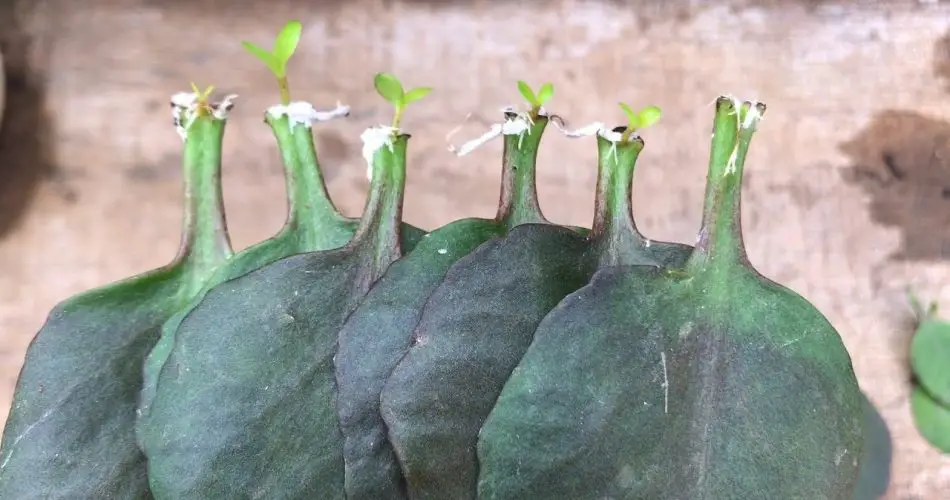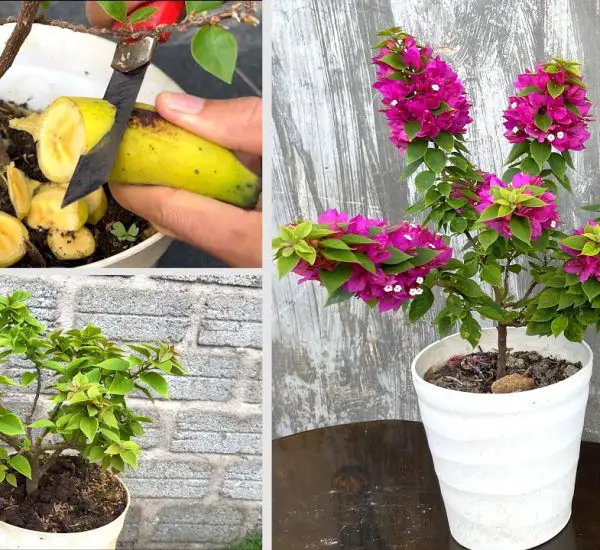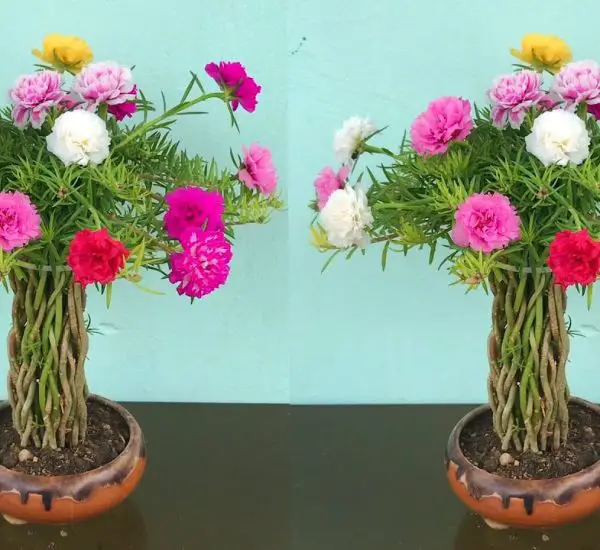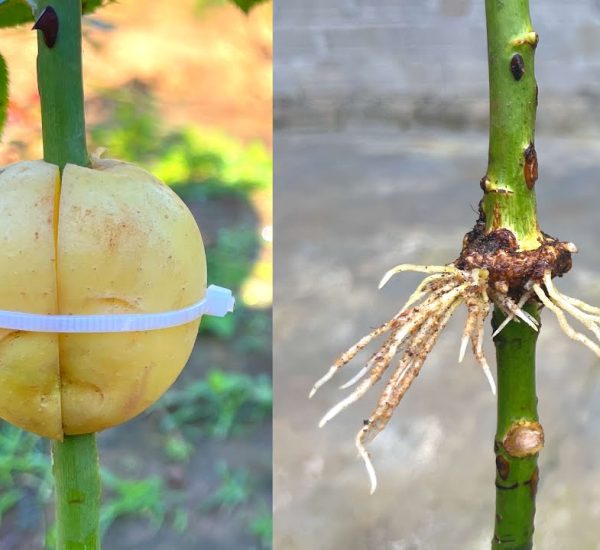Kalanchoe is a succulent plant that belongs to the Crassulaceae family, well-known for its vibrant flowers and easy care. One of the most interesting things about Kalanchoe (particularly Bryophyllum calycinum) is its ability to propagate easily from its leaves. If you’re looking for a fun and sustainable way to grow your own Kalanchoe plants, using plastic bottles is an excellent option. This method is not only eco-friendly but also a space-saving way to propagate your favorite plants.
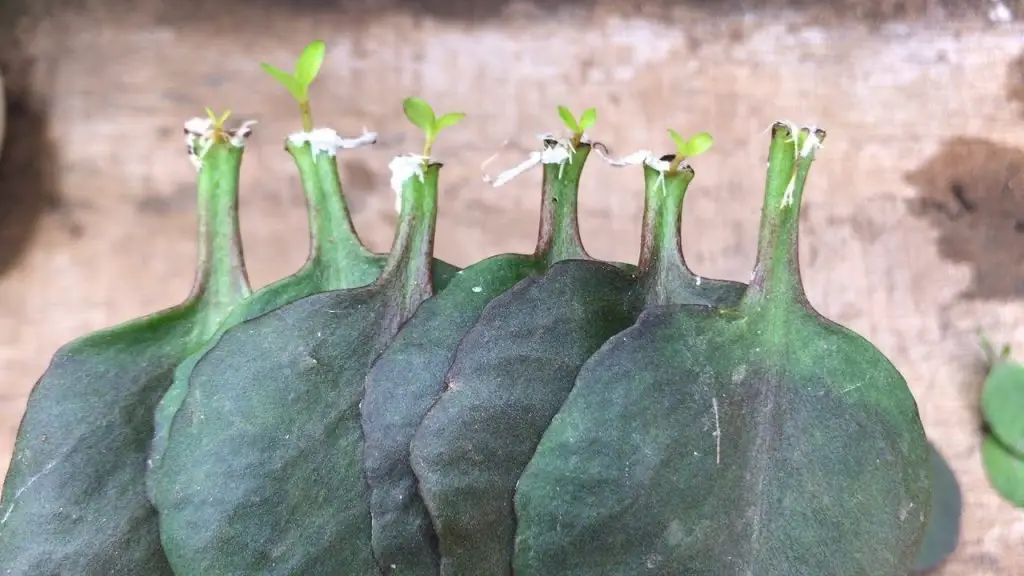
In this guide, we’ll show you how to successfully plant Kalanchoe leaves in plastic bottles and grow your very own beautiful Bryophyllum calycinum plants.
What is Bryophyllum Calycinum?
Bryophyllum calycinum, also known as Chandelier Plant or Kalanchoe pinnata, is a popular succulent known for its attractive green leaves and colorful flowers. The plant is distinctive because it can produce new plants from tiny plantlets that grow along the edges of its leaves. These plantlets can be easily separated and replanted, making Kalanchoe one of the best plants for propagation.
Why Use Plastic Bottles for Planting Kalanchoe Leaves?
Plastic bottles are a great way to grow Kalanchoe leaves because they provide an affordable, sustainable, and compact container for your plants. Here are a few reasons why plastic bottles work perfectly for propagating Bryophyllum calycinum:
- Cost-Effective: Plastic bottles are inexpensive and readily available, making them an affordable option for propagating plants.
- Good Drainage: You can easily create drainage holes in the bottom of a plastic bottle, ensuring proper water flow and preventing root rot.
- Space-Saving: Plastic bottles are small and lightweight, allowing you to grow multiple plants in a small space—perfect for urban gardeners or people with limited outdoor space.
- Recycling: Using plastic bottles for planting helps reduce waste and repurpose old items, making it an eco-friendly gardening solution.
Step-by-Step Guide to Planting Kalanchoe Leaves in Plastic Bottles
What You’ll Need:
- Plastic bottles (clean and empty)
- Kalanchoe leaves (from a healthy plant)
- Cactus or succulent potting mix
- Scissors or a knife
- Watering can
- Garden gloves (optional)
Step 1: Prepare the Plastic Bottles
- Cut the Bottles: Use scissors or a knife to cut the plastic bottle into half or thirds, depending on how large you want your container to be. Make sure the top portion has enough space for the Kalanchoe leaves and some soil.
- Create Drainage Holes: Use a sharp object, such as a knife or scissors, to create small drainage holes at the bottom of the plastic bottle. This ensures water can flow out and prevents the plant from sitting in stagnant water, which could cause root rot.
Step 2: Prepare the Soil
- Fill the bottom of the plastic bottle with a well-draining potting mix, ideally a mix designed for cactus or succulent plants. These plants need soil that allows water to drain away quickly while still holding enough moisture for the plant roots.
- You can also add a thin layer of gravel or small stones at the bottom of the plastic bottle to further improve drainage.
Step 3: Propagate Kalanchoe Leaves
- Choose Healthy Leaves: Select a few healthy Kalanchoe leaves from an existing plant. Look for leaves that are not damaged or diseased. Make sure to pick mature leaves, as they are more likely to produce new plantlets.
- Let the Leaves Callus: Before planting, place the Kalanchoe leaves in a dry spot for about 2-3 days to allow the cut end to callus over. This prevents the leaves from rotting once planted.
Step 4: Plant the Leaves
- Once the leaves have dried out, place them flat on top of the prepared soil. Do not bury the leaves; simply let them sit on the surface of the soil. The new plantlets will grow from the edges of the leaves over time.
- Gently press the leaves down to make sure they make good contact with the soil, but avoid pressing them too deeply.
Step 5: Water and Care
- Water Gently: After planting the leaves, give the soil a light watering. Make sure the water drains out from the bottom of the bottle. Kalanchoe plants are drought-tolerant, so it’s better to underwater than to overwater. Allow the soil to dry out between waterings.
- Provide Sunlight: Place your plastic bottles in a location with indirect sunlight. Kalanchoe plants prefer bright light but should be protected from direct, harsh sun to avoid leaf burn.
- Maintain Temperature: Keep your plastic bottles in a warm, dry environment, as Kalanchoe thrives in temperatures between 60°F and 85°F (15°C to 30°C).
Step 6: Watch for New Growth
- Plantlets Formation: After a few weeks, you should start to see tiny plantlets forming along the edges of the Kalanchoe leaves. Once the plantlets have developed their roots, you can gently separate them from the mother leaf and transplant them into new containers if desired.
- Transplant When Ready: When the new plants have grown large enough and have strong roots, you can transplant them into separate pots or directly into your garden.
Additional Tips for Growing Kalanchoe from Leaves:
- Use Multiple Bottles: If you have several Kalanchoe leaves, you can plant them in different plastic bottles for a larger propagation project.
- Avoid Overwatering: As with all succulents, it’s important to avoid overwatering. Kalanchoe is more prone to rot than to drought, so ensure the soil is well-draining and dry out between waterings.
- Fertilize Lightly: You can feed your Kalanchoe with a diluted, balanced fertilizer every few months to encourage healthy growth, but be careful not to overdo it. Too much fertilizer can lead to weak growth.
Conclusion
Planting Kalanchoe leaves in plastic bottles is an easy, sustainable, and creative way to propagate Bryophyllum calycinum (Kalanchoe) in the comfort of your own home. With just a few simple steps, you can grow new plants from healthy leaves and enjoy beautiful, colorful flowers for years to come. Whether you’re an experienced gardener or a beginner, this method is both eco-friendly and effective. So, why not try it out and see how many new Kalanchoe plants you can grow from the leaves in your plastic bottles?
Happy gardening!
